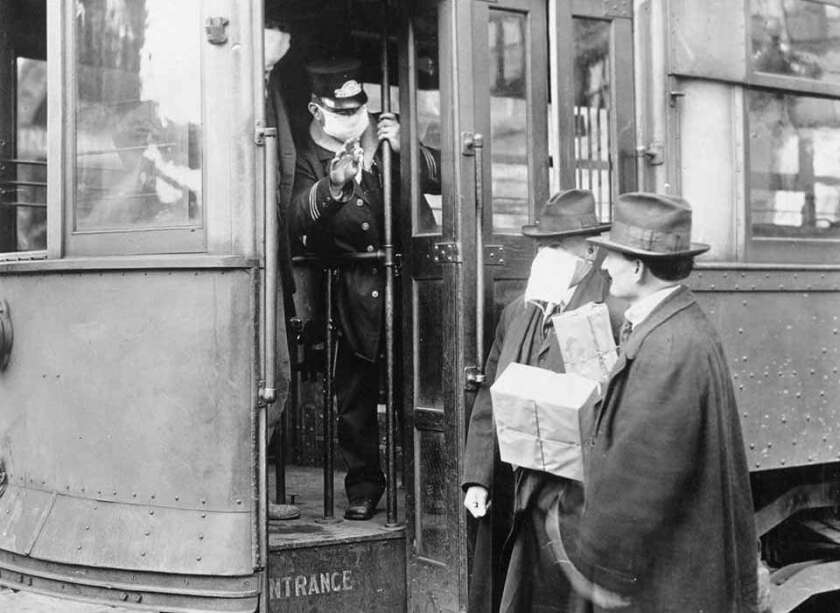But this moment of peril for public transportation is also an opportunity to break old routines.
“Transit agencies get stuck in their service patterns, without considering the fact that those service patterns may not be reflective of what people want,” says Yonah Freemark, senior research associate at the Urban Institute. “They have bus routes, in some cases, that they’ve had literally since they were running streetcars.”
Freemark and his co-authors — Jorge González-Hermoso and Jorge Morales-Burnett — wrote a lengthy report for the American Public Transportation Association (APTA) on how an array of transit agencies are planning for the post-pandemic future.
None of the institutions featured are from the handful of robust legacy systems in old, cold cities that tend to dominate the transit conversation. Instead, the report focuses on Denver, Los Angeles, Pittsburgh, Richmond, Virginia, and Spokane, Wash.

A common theme is that transit officials were spurred to think differently as a result of the protests over George Floyd’s murder. This forcible reckoning with questions of racial justice, and the realities of who kept riding transit before the availability of vaccines, broke agencies of at least some old habits.
Historically, transit agencies have seen a tradeoff between equity concerns and efficient services, according to Morales-Burnett. Policymakers felt they had to choose between a system that goes everywhere, but not very frequently, and a more effective option that serves fewer parts of a region.
During the pandemic, however, some officials reoriented their service patterns to better serve lower-income areas, increasing frequency in neighborhoods that saw higher ridership in 2020. Wealthier and often more suburban communities where remote work was most prevalent were more likely to see service declines.
It’s not by coincidence that the Greater Richmond Transit Company (GRTC) is the only transportation system in the study that has largely recouped its ridership, Freemark and Morales-Burnett argue.
Virginia’s capital city redesigned its bus system with an eye towards racial equity before 2020. That resulted in higher frequencies through denser neighborhoods with lower median household incomes. During the pandemic, they then cut service to suburban-focused commuter routes while preserving those higher inner-city services.
“The other agencies had not done that kind of change in advance of the pandemic, which may explain why they experienced such significant declines,” says Freemark.
In an analysis posted on the Urban Institute’s website, the researchers showed that Pittsburgh increased bus and rail service in 37 percent of the neighborhoods the transit system covers, principally in areas home to more people of color and those living below the poverty line.

This is in the context of larger ridership decline. The Port Authority of Allegheny County, which operates transit in the Pittsburgh metropolitan area, saw ridership drop by over 80 percent at the beginning of the pandemic and remains massively depressed. In late October, bus ridership was 50 percent of pre-pandemic levels and light rail remains down a whopping 73 percent.
“The ridership world we had on March 13, 2020, is not coming back,” said Katharine Eagan Kelleman, CEO of the Port Authority, in an interview with thePittsburgh Post-Gazette. “Ridership may continue to grow somewhat, but it will look different. We don’t even know what that might look like yet.”
Freemark and his co-authors also examined fare-free policies during the pandemic. All of the agencies eliminated fares for at least part of the COVID-19 period, largely to limit potentially dangerous interactions between riders and transit workers. This happened to coincide with a longer term push for fare-free transit from left-wing politicians, like Boston’s new Mayor Michelle Wu (who championed the idea when she was a city councilmember).
Smaller cities like Raleigh, N.C., and Richmond, Va., are extending these experiments into the post-vaccine period. In these cities, ridership is largely concentrated among lower income people and fares comprise a smaller share of the budget than they do in places like New York or Boston. Across the cities studied in the APTA report, fares made up 16 to 25 percent of 2019 transit budgets.
“If I can find a way to fill that [$5 million hole] and still expand service, then we might be able to do this permanently,” Julie Timm, CEO of GRTC, toldGoverningin August. “We’re going to test it out and do a proof of concept for a couple of years. But if we can’t find the money to fill it, if there is no appetite for finding the funds to preserve this, then fares will come back.”
Fare-free policies haven’t always brought the boons that advocates claim they will. In Los Angeles the period of free transit did not induce higher ridership. That seems to indicate that Richmond’s fare-free experiment was successful in combination with higher frequencies in denser neighborhoods.
Some policymakers Freemark and Morales-Burnett interviewed also feared that their services might see vastly increased usage by the unhoused population under a free-fare regime. Many transportation officials made moves to restrict access to their systems by homeless residents during the pandemic, sealing entrances or shuttering whole stations. (It’s worth noting that this was often done under pressure from transit workers, who feared for their own health and safety.)
Even as Mayor Wu has announced a series of additional free bus services during her first weeks in office, the question of fiscal impact remains. Freemark says that transit systems like the MTA in New York or Metro in Washington, D.C., which get 30 to 50 percent of their operating costs from fares, will have a tougher time adopting such policies.
“The argument that having free fares will make it so transit agencies can’t expand service is more salient in cities with a very large share of revenues coming from fares,” says Freemark. “But most American transit systems collect relatively little from fares. We should be open to the idea that fares are not a top priority if your goal is to ensure access to as many as possible.”
Related Articles














